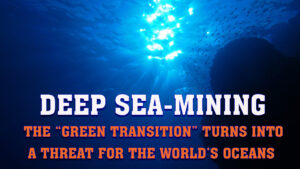Review of the 22nd International
«New Scientific Outlook» World Congress
The World Foundation for Natural Science
Thursday, November 2nd, to Sunday, November 5th 2017
Dis-ease and Sickness—Blessing or Curse?
The Very Reverend Dean em. Paul Probst, SF, Lucerne, Switzerland
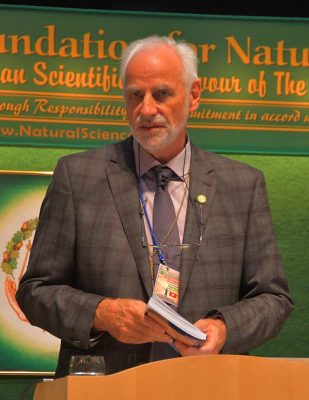 As the European President of The World Foundation for Natural Science explained in his two-part presentation, disease and illness do not happen by accident or fate; rather, they develop slowly as a result of the natural reaction of our bodies, when our life -physically, emotionally, mentally and spiritually-is no longer in balance. Often the cause of this disharmony is what we call “stress”. Disease, therefore is not a mistake of the body. Cancer, for example, is a normal, adaptive reaction of the body and not, unlike the modern medicine point of view, its failed function. The body reacts accordingly, especially to a long-lasting state of hypoxia and hypothermia. It is possible to heal cancer by life style changes. The production of cancer cells can be stopped merely by doing special abdominal breathing exercises with visualisation and moderate exercise.
As the European President of The World Foundation for Natural Science explained in his two-part presentation, disease and illness do not happen by accident or fate; rather, they develop slowly as a result of the natural reaction of our bodies, when our life -physically, emotionally, mentally and spiritually-is no longer in balance. Often the cause of this disharmony is what we call “stress”. Disease, therefore is not a mistake of the body. Cancer, for example, is a normal, adaptive reaction of the body and not, unlike the modern medicine point of view, its failed function. The body reacts accordingly, especially to a long-lasting state of hypoxia and hypothermia. It is possible to heal cancer by life style changes. The production of cancer cells can be stopped merely by doing special abdominal breathing exercises with visualisation and moderate exercise.
The speaker also pointed out the two power plants in human cells and their significance for health. The anaerobic way, independent of oxygen –the glycolysis-way– is meant for emergencies-as it were and for fight and flight situations – and obtains its energy mainly from carbohydrates. However, the mitochondrial way is aerobic, depending on oxygen. It also needs some carbohydrates, but also adds proteins, fats, oxygen and sunlight and produces 18 times more energy than the glycolysis way. These two ways have to be in balance. However, due to stress, very often we merely function by way of glycolysis, and as such ingest too many carbohydrates. Thus, imbalance is programmed, and disease follows as a consequence. Nature intended a natural rhythm for us to which we should adhere. We should not forget that man is a spiritual being on a physical journey and not a physical being on a spiritual journey. The older a person is, the more dominant becomes the mitochondrial way, and the more important his focus on spiritual things until he attains illumination. Then followed by a natural death, exhaling one´s last breath in peace.
Spring Falls Silent—Why More and More Insects and Birds Are Disappearing
Sebastian Hausmann, M.Sc., Berlin, Germany
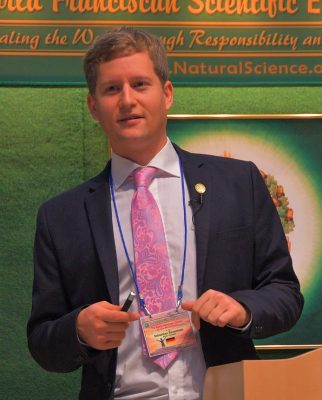 In his lecture about the disappearing insects and birds, Sebastian Hausmann showed how closely all living beings are inseparably connected to each other by their life and their position in the ecosystem – from the smallest blade of grass to ant and bird and up to man. And that insects take an important key position as pollinators and soil convertors. Unfortunately, for a long time the constant disappearing of insects has hardly been noticed and has now developed into a massive problem: In Central Europe, up to 75% of insects have disappeared in the last 30 years. The destruction of their natural habitats, lack of food resources, toxic pesticides, increased permanent lighting and microwave radiation from wireless communications make survival difficult for insects and other animals. Ecological agriculture shows ways out of this situation, because it creates areas that serve as a habitat for animals again. Apart from that, farming is conducted without pesticides- unfortunately the EU just gave glyphosate the green light for another 5 years! Still, what gives hope is that the German supermarket chain ALDI and the Swiss supermarket COOP dared to take the first step in banning toxic pesticides and also fruit and vegetables that do not carry an organic label. It is now up to consumers to demand these measures from other grocers, too – thereby reducing the application of pesticides even more. In conclusion, Sebastian Hausmann gave valuable hints for how to create varied biospheres in one´s own garden, and which fruit trees, plants and flowers provide sustenance to most insects and birds, e.g. Sorbus domestica, hollander, sallow, blackthorn, hawthorn, blackberry, hazelnut and fruit trees.
In his lecture about the disappearing insects and birds, Sebastian Hausmann showed how closely all living beings are inseparably connected to each other by their life and their position in the ecosystem – from the smallest blade of grass to ant and bird and up to man. And that insects take an important key position as pollinators and soil convertors. Unfortunately, for a long time the constant disappearing of insects has hardly been noticed and has now developed into a massive problem: In Central Europe, up to 75% of insects have disappeared in the last 30 years. The destruction of their natural habitats, lack of food resources, toxic pesticides, increased permanent lighting and microwave radiation from wireless communications make survival difficult for insects and other animals. Ecological agriculture shows ways out of this situation, because it creates areas that serve as a habitat for animals again. Apart from that, farming is conducted without pesticides- unfortunately the EU just gave glyphosate the green light for another 5 years! Still, what gives hope is that the German supermarket chain ALDI and the Swiss supermarket COOP dared to take the first step in banning toxic pesticides and also fruit and vegetables that do not carry an organic label. It is now up to consumers to demand these measures from other grocers, too – thereby reducing the application of pesticides even more. In conclusion, Sebastian Hausmann gave valuable hints for how to create varied biospheres in one´s own garden, and which fruit trees, plants and flowers provide sustenance to most insects and birds, e.g. Sorbus domestica, hollander, sallow, blackthorn, hawthorn, blackberry, hazelnut and fruit trees.
Cosmetics—Do They Harm Our Bodies and Environment?
Willi Luger, master hairdresser and company founder, Ernstbrunn, Austria
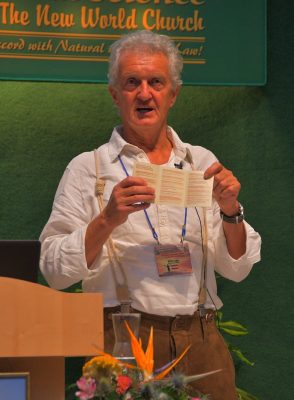 Willi Luger made it clear right from the beginning: hairdressers are living dangerously. A quarter of all occupational skin diseases befalls solely the hairdresser, even though they do not even constitute 1% of all employees. The Austrian association of professionals claims that it is the addition of water to the chemicals that is responsible for these skin diseases! That is why hairdressers are obliged to perform even a wet haircut with gloves. For Luger – running a successful hairdressing salon all his life – it is clear: His colleagues are falling ill because they are working with highly aggressive and carcinogenic substances – from shampoos to hair colorants. It is no wonder then that cosmetics are specifically exempted from having to have a hazard warning label of their ingredients! That is why the consumer is not aware that he could use a car wash shampoo and this would be more healthy than many a baby shampoo!
Willi Luger made it clear right from the beginning: hairdressers are living dangerously. A quarter of all occupational skin diseases befalls solely the hairdresser, even though they do not even constitute 1% of all employees. The Austrian association of professionals claims that it is the addition of water to the chemicals that is responsible for these skin diseases! That is why hairdressers are obliged to perform even a wet haircut with gloves. For Luger – running a successful hairdressing salon all his life – it is clear: His colleagues are falling ill because they are working with highly aggressive and carcinogenic substances – from shampoos to hair colorants. It is no wonder then that cosmetics are specifically exempted from having to have a hazard warning label of their ingredients! That is why the consumer is not aware that he could use a car wash shampoo and this would be more healthy than many a baby shampoo!
If the cosmetics industry is putting millions into research, according to Luger, that is mainly for finding out how to produce their products more cheaply. What earns many euros in sales, commonly costs but a few cents to manufacture. Thus, 90% of cosmetics are sold because of huge advertising and not because of high demand from the consumer. As a consequence, the body care industry today manufactures products with more contaminants than nurturing additives. Willi Luger knows what he is talking about: Twenty years ago, he invented his own line of hairdressing cosmetics whose skin and hair care products only consist of the best and completely harmless natural ingredients. In an entertaining way, Willi Luger shared his rich experiences and informed the audience of the scheming cosmetics industry that is in fact endangering both our health and the quality of our water more than we know.
Planet Water—Our Basis for Life and Our Responsibility
Denise Ulrich, Dip. Geography, HLA Higher Education, Hohenrain, Switzerland
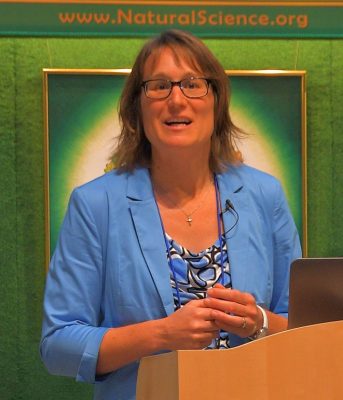 In her lecture, Denise Ulrich led us on a journey to “planet water”. The very fact that man consists of 99% water molecules shows our intimate link with the water element. What if it did not rain anymore, if water sources dried up? We all know: Without water there is no life. Yet are we conscious of it daily, in every moment of our lives, and do we live accordingly? Our behaviour in treating water presents a different picture. Dealing with the treatment of the waters of the earth without considering the nature of water provokes a fierce response from nature. Flooding as well as droughts are the consequence of disregarding this natural order. Natural disasters on a grand scale mirror the situation on a small one: The water droplet pictures by Denis Ullrich under the dark-field microscope show on the one hand the physical pollution, e.g. use of pesticides in fruit tree cultivation and on the other hand the mental pollution by negative feelings presented itself as a chaotic inner structure. In contrast to the chaos is the highly structured, hexagonally built, fluent crystalline water of the Exclusion Zone (EZ) water. According to Professor G. H. Pollack, EZ water turns water into a battery, providing us with energy for important body functions with the force of the sun. It is our responsibility to restore order again in the water, the environment, our bodies and our feelings, thus healing ourselves and the planet. The drop-pictures speak for themselves: Man has the strength to restore order within him (or her)self!
In her lecture, Denise Ulrich led us on a journey to “planet water”. The very fact that man consists of 99% water molecules shows our intimate link with the water element. What if it did not rain anymore, if water sources dried up? We all know: Without water there is no life. Yet are we conscious of it daily, in every moment of our lives, and do we live accordingly? Our behaviour in treating water presents a different picture. Dealing with the treatment of the waters of the earth without considering the nature of water provokes a fierce response from nature. Flooding as well as droughts are the consequence of disregarding this natural order. Natural disasters on a grand scale mirror the situation on a small one: The water droplet pictures by Denis Ullrich under the dark-field microscope show on the one hand the physical pollution, e.g. use of pesticides in fruit tree cultivation and on the other hand the mental pollution by negative feelings presented itself as a chaotic inner structure. In contrast to the chaos is the highly structured, hexagonally built, fluent crystalline water of the Exclusion Zone (EZ) water. According to Professor G. H. Pollack, EZ water turns water into a battery, providing us with energy for important body functions with the force of the sun. It is our responsibility to restore order again in the water, the environment, our bodies and our feelings, thus healing ourselves and the planet. The drop-pictures speak for themselves: Man has the strength to restore order within him (or her)self!
The Abundance of The Oceans….–For How Much Longer?
Sabrina Amico, lic.phil. I, Beinwil, Switzerland
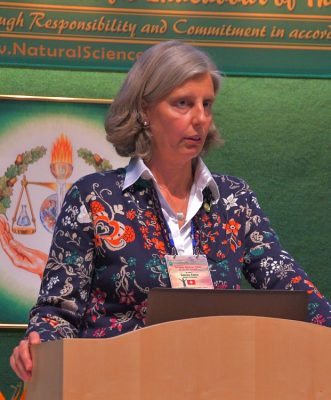 Sabrina Amico described the vital functions of the oceans in her presentation. She showed us their extremely serious and alarming state, as well as specific suggestions for possible improvement and potential solutions that we can put into practice in our individual lives and ought to do so immediately and urgently, too. Especially, when we are aware of the fact that we are inextricably linked with the oceans in manifold ways. Based on a three-dimensional approach, the oceans make up 90% of the entire habitat of the planet. Mankind lives on the remaining 10% and has, since the beginning of industrialization, grossly exploited and polluted the seemingly inexhaustible ecosystem of the oceans to such a large extent that the oceans and their enormously precious and indispensable service to the planet is being put under serious threat.
Sabrina Amico described the vital functions of the oceans in her presentation. She showed us their extremely serious and alarming state, as well as specific suggestions for possible improvement and potential solutions that we can put into practice in our individual lives and ought to do so immediately and urgently, too. Especially, when we are aware of the fact that we are inextricably linked with the oceans in manifold ways. Based on a three-dimensional approach, the oceans make up 90% of the entire habitat of the planet. Mankind lives on the remaining 10% and has, since the beginning of industrialization, grossly exploited and polluted the seemingly inexhaustible ecosystem of the oceans to such a large extent that the oceans and their enormously precious and indispensable service to the planet is being put under serious threat.
The oceans produce nearly 75% of the oxygen for the planet; they provide the largest reservoir of fresh water which is purified again and again through the water cycle of the ocean´s salt water. The oceans absorb a quarter of the CO2-contents from the atmosphere, thus also serving as a heat buffer and basically as essential climate regulators. The production of oxygen is threatened by massive plastic pollution because phytoplankton depends on a translucent sea surface for oxygen production via photosynthesis.
Considering the total dependence of all life on the oceans, such disrespectful behaviour is incomprehensible. Only a conscious awareness and attitude of love and gratitude can lead to a radical behavioural change and to a respect for this mighty ecosystem; for what you love, you do not destroy.
To this end, Sabrina Amico showed the beauty and abundance of the seas in film sequences. She hinted at promising initiatives for restoring the natural order of the oceans worldwide and encouraged the conference participants to consciously pay attention in their daily lives to introducing only natural substances to the water cycle, to limiting plastic consumption of every kind or to replacing it with natural material as well as to positively influence consumer behaviour by our own purchases. Small beginnings, greater ends and because everything is connected to everything, accordingly there is a ripple effect that eventually is going to include everyone and everything. Saving the oceans is possible, and it starts in our everyday life, in the Here and Now!
Cancer—The End of This Terrifying Threat
Rolf Backenecker, Naturopath, Meilen, Switzerland
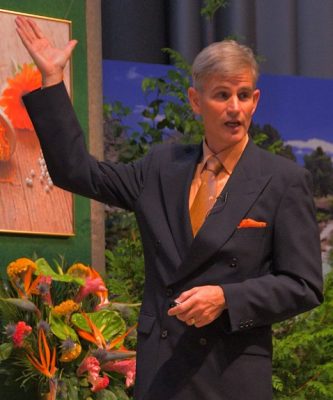 Cancer is the most common cause of death according to the latest statistics. Conventional methods of treatment promise only a small percentage chance of recovery, and the most severe of side effects to put up with. However, there is a gentle, natural healing method with a proven 80%+ cancer cure rate, on the basis of 40,000 cases – and this even with highly aggressive tumours such as prostate cancer! Dr Backenecker presented the Banerji Protocols, a highly evolved homeopathy, the like its inventor, Samuel Hahnemann, had envisioned at the end of his life: Homeopathy, not only treating the individual patient, but the disease itself. This is precisely the heritage of an Indian homeopathic dynasty, in whose family practice far more than a thousand patients are seeking help – daily! Time pressures and ill people with no money for an expensive treatment forced the medical doctors to enter new avenues in homeopathy. This is how standardized treatment recipes for countless diseases have been developed – among them all kinds of cancer – their healing success acknowledged by famous scientific institutes and universities all over the world.
Cancer is the most common cause of death according to the latest statistics. Conventional methods of treatment promise only a small percentage chance of recovery, and the most severe of side effects to put up with. However, there is a gentle, natural healing method with a proven 80%+ cancer cure rate, on the basis of 40,000 cases – and this even with highly aggressive tumours such as prostate cancer! Dr Backenecker presented the Banerji Protocols, a highly evolved homeopathy, the like its inventor, Samuel Hahnemann, had envisioned at the end of his life: Homeopathy, not only treating the individual patient, but the disease itself. This is precisely the heritage of an Indian homeopathic dynasty, in whose family practice far more than a thousand patients are seeking help – daily! Time pressures and ill people with no money for an expensive treatment forced the medical doctors to enter new avenues in homeopathy. This is how standardized treatment recipes for countless diseases have been developed – among them all kinds of cancer – their healing success acknowledged by famous scientific institutes and universities all over the world.
It is even more astonishing that the public does not know about this and there are efforts under way in many countries to stigmatize homeopathy as useless charlatanry. Nevertheless, more and more doctors and therapists including in Europe are fortunately working with the Banerji protocols. Among them our speaker, who in his fascinating talk, presented to us the homeopathy of the new millennium that gives hope to us all that the diagnosis of “cancer” no longer means a death sentence.
Induction Hobs—Danger to Our Health
Marcel Hofmann, MSEE, Utzigen, Switzerland
Franz Ulrich, Dipl. Electr.Engineer ETH, Hohenrain, Switzerland
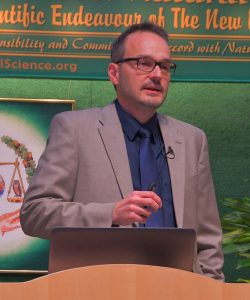 The presentation by Marcel Hofmann and Franz Ulrich on induction hobs, their function and the basic technical facts was audience-appropriate and also including a clear demonstration. There was also the surprising insight: The strong magnetic field of induction hobs are detrimental to the cook´s health as many studies show. The cancer risk rises and brain or brain-related disease is more likely to occur (e.g. Alzheimer´s, ALS), as the protective mechanism like the blood-brain-barrier is weakened.
The presentation by Marcel Hofmann and Franz Ulrich on induction hobs, their function and the basic technical facts was audience-appropriate and also including a clear demonstration. There was also the surprising insight: The strong magnetic field of induction hobs are detrimental to the cook´s health as many studies show. The cancer risk rises and brain or brain-related disease is more likely to occur (e.g. Alzheimer´s, ALS), as the protective mechanism like the blood-brain-barrier is weakened. 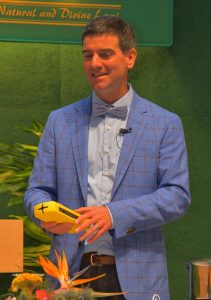 Despite the fact that around 26,000 scientific studies on the issue have been published so far, official bodies and governments find it hard to finally implement actually safe exposure limit values. So far, they have been protecting the industry rather than the health of human beings.
Despite the fact that around 26,000 scientific studies on the issue have been published so far, official bodies and governments find it hard to finally implement actually safe exposure limit values. So far, they have been protecting the industry rather than the health of human beings.
The two speakers´ own investigations and experiments indicate that the inner structure of food being cooked with induction hobs is completely destroyed. In scientific terms this can be explained by the depolarisation of the spinning of the electron, caused by the medium-frequency magnetic field.
Therefore, the induction hob presents a danger to human health; however, this problem can be easily solved: Don’t use induction hobs and use a gas or electric stove instead! As these facts are not well-known (to the public), the induction stove still enjoys great popularity as current sales figures show. For this reason, it is of immense importance to spread this knowledge fast!
Gonstead Chiropractic—Healing Man from The Inside
Dr Stefan Rauber, Chiropractor, Wallisellen, Switzerland
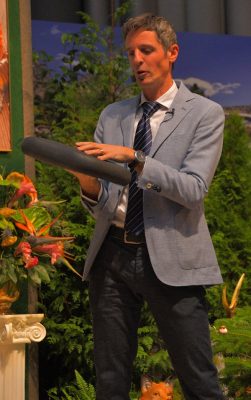 The chiropractic technique developed by Dr Clarence S. Gonstead can virtually be considered the “gold standard” of chiropractic techniques. Our spine is the supporting axis in the human body and at the same time protects the nerves of the central nervous system. Thus, the nervous system and the spine work as a single unit. When there is something wrong with the spine, this is going to affect the nervous impulses and therefore also the organs.
The chiropractic technique developed by Dr Clarence S. Gonstead can virtually be considered the “gold standard” of chiropractic techniques. Our spine is the supporting axis in the human body and at the same time protects the nerves of the central nervous system. Thus, the nervous system and the spine work as a single unit. When there is something wrong with the spine, this is going to affect the nervous impulses and therefore also the organs.
Accidents, falls (often occurring in the first ten years in life), poor postures (e.g. permanently surfing on smartphone), lack of exercise or even birth trauma, and even exposure to toxins or mental stress can cause displacement of vertebrae. These displacements of/ displaced vertebrae disturbing the nerve system are called subluxations and affect the entire system.
Various examples were used to demonstrate a Gonstead treatment. Via diagnostic techniques (among them X-ray) subluxations are identified, corrected (adjusted, not manipulated and under no circumstances whatsoever moved by rotation), then the patient is left alone. At best, readjustments are necessary.
Apart from that Dr Rauber pointed out that sleeping on one´s belly (in abdominal position) should be avoided, if possible, and endurance sports ought to be preferred to competitive sports. Beneficial sports are also tai chi, climbing and stretching exercises. For the preservation of good health one ought to pay attention to good shoes. To drink enough water with a little bit of salt (not table salt, but good quality salt, like e.g. rock salt).
How Painkillers and Sedatives Drive People into Dependency
Lukas Waldmann, Naturopath, Rotkreuz, Switzerland
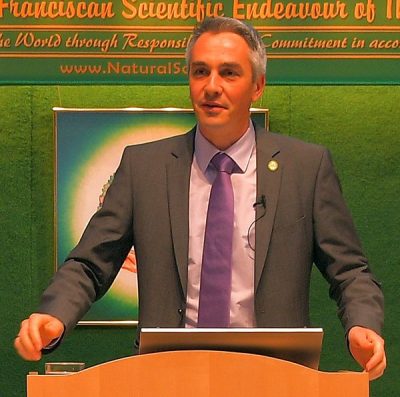 On August 8th 2017, the President of the United States, Donald Trump, declared a state of emergency because of the high number of opioid addicts. With, 60,000 casualties because to prescribed medication and drugs per year, the topic of medicine-dependency and of misuse of narcotic substances for getting a kick is also a hot topic in the European media. However, sedatives and sleeping pills (especially benzodiazepines and Z-substances), antidepressants or stimulants such as amphetamines and Ritalin must not be forgotten, Lukas Waldmann warned.
On August 8th 2017, the President of the United States, Donald Trump, declared a state of emergency because of the high number of opioid addicts. With, 60,000 casualties because to prescribed medication and drugs per year, the topic of medicine-dependency and of misuse of narcotic substances for getting a kick is also a hot topic in the European media. However, sedatives and sleeping pills (especially benzodiazepines and Z-substances), antidepressants or stimulants such as amphetamines and Ritalin must not be forgotten, Lukas Waldmann warned.
Like painkillers, all of them influence the function of neurotransmitters and receptors in the nervous system and after only a few weeks create an addiction, possibly seducing the doctor or patient into the temptation of increasing in dose. The renewed effect will be there for a certain amount of time until the dose has to be increased again. Often medication continues over several months and even years with a continually increasing risk of developing a dependency. Symptoms that follow the ending of drug treatment make it necessary to undergo an expensive, lengthy, professionally supervised detoxication.
In Germany, in 2014 alone, 18.7 million packages of hypnotic and sedative agents were sold. Around 2 million people are addicted to these drugs. Annual follow-up costs due to benzodiazepine dependence amount to about 14 million euros. It is especially noticeable that sedatives and sleeping pills are first and foremost prescribed to women, two thirds of them over 60 years old. Men rather tend to take stimulants to satisfy the demands from family and professional life. Especially shift workers or managers in leading positions like to reach for pick-me ups and more and more students try to improve their performance, e.g. by Ritalin. This kind of behaviour can lead to addiction in the long run, debilitation and to burn-out. Such a state of continuous stimulation, being over-wound up through unnaturally raised physical and mental performance, can result in some cases, in the alternating use of sedatives in order to be able to eventually “come down” again
Pain is often the effect of chronic inflammation in the body over many years. Its causes in the gastrointestinal tract, as well as the entire musculoskeletal system can, for example, be well cured by remedies such as organic sulfur (MSM) and diverse herbal medicine propagates like rampion, curcuma, incense and astaxanthin because of their beneficial effect. A central issue remains the intestinal repair and the deacidification of the body with the help of basic minerals and alkaline baths. Phyto propagates from the passion flower, valerian, taiga root or rose root can be very helpful for better stress management and for enhancing sound sleep.
All in all, Lukas Waldmann recommends a balanced lifestyle with breaks, moderate physical exercise, a good social life, lots of laughter and every now and then a piece of good chocolate as a precondition for “our messenger substances of happiness” (serotonin, dopamine, endorphin and noradrenaline) to be and remain balanced. In contrast to this, psychotropic drugs are exclusively meant for medical emergencies only for a very short application time because they interrupt the necessary communication with our bodies. If one wants to avoid drug addiction, a change to natural alternatives will be inevitable.
Animals—Their Rights to Live and Our Responsibility for Them
José De Almeida, Agricultural Engineer, Lima, Peru
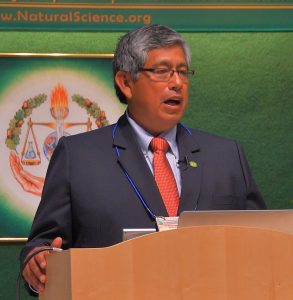 As the speaker explained, all living creatures are part of the whole. Also, man is only one element in the entire chain and like every living being has its place. A society that loves animals is a moral one. However, if there is indifference towards the suffering of animals as currently holds true in many parts of the world, society cannot grow either. The compassion for animals is also an indicator for the society´s level of development; sadism has no place in an advanced society! No man is an island: What he does to animals, he does to himself.
As the speaker explained, all living creatures are part of the whole. Also, man is only one element in the entire chain and like every living being has its place. A society that loves animals is a moral one. However, if there is indifference towards the suffering of animals as currently holds true in many parts of the world, society cannot grow either. The compassion for animals is also an indicator for the society´s level of development; sadism has no place in an advanced society! No man is an island: What he does to animals, he does to himself.
In nature harmony and balance prevail and exploitation does not exist. Nevertheless, the relationship of man towards animals is often characterized by exploitation. José de Almeida mentioned at this point the experiments with animals and also situations where animals are tortured for human entertainment, especially bull fighting, and cock- or dogfighting. He also explained that through non-species-appropriate breeding, painful killing toxins are generated in the animals´ bodies because of the fear they suffered. These toxins man absorbs again when eating animal meat bred and killed this way.
In order for exploitation of animals by men to be stopped and prevented, rules have to be formulated for our treatment of animals. The speaker mentioned the International Animal Rights Day, celebrated this year on December 10th. These rights include the right of existence, the right of respect, the right not to be extinct, and also the right of a natural habitat, namely that the natural habitats of animals are preserved.
Animals depend on man; man carries a great responsibility that has to be fulfilled by education, training and appropriate action!
Daniel Schillig, Farmer and politician, Neuheim, Switzerland
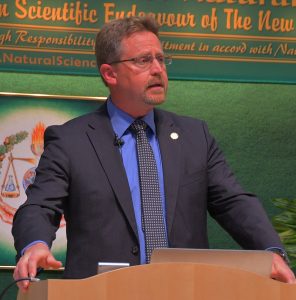 In part two of the presentation on the subject of “Animals, their right to live and our responsibility for them” Daniel Schillig at first introduced us to his farm. His stock farm includes (suckler cows, dwarf goats, chicken, cats and a dog). Burgweid, his farm, is a classic family farm, run with high regard and respect for nature and in cooperation with Her. In contrast to this we find industrial farming. The speaker demonstrated in an impressive manner the negative effects this type of farming has on nature. Intensive factory farming, accompanied by a development to even bigger large -scale agricultural farming businesses with more and more structurally poorer countryside are examples of that. A possible solution the speaker introduced is the Silvopastoral system, practiced in many places in South America. Agricultural areas that have often been overgrazed, are being cultivated anew with trees, shrubs, areas fully sown with grass. The result are luscious pastures, where animals obviously feel very comfortable, as the film clip showed.
In part two of the presentation on the subject of “Animals, their right to live and our responsibility for them” Daniel Schillig at first introduced us to his farm. His stock farm includes (suckler cows, dwarf goats, chicken, cats and a dog). Burgweid, his farm, is a classic family farm, run with high regard and respect for nature and in cooperation with Her. In contrast to this we find industrial farming. The speaker demonstrated in an impressive manner the negative effects this type of farming has on nature. Intensive factory farming, accompanied by a development to even bigger large -scale agricultural farming businesses with more and more structurally poorer countryside are examples of that. A possible solution the speaker introduced is the Silvopastoral system, practiced in many places in South America. Agricultural areas that have often been overgrazed, are being cultivated anew with trees, shrubs, areas fully sown with grass. The result are luscious pastures, where animals obviously feel very comfortable, as the film clip showed.
Furthermore, the speaker discussed the effects of hunting on the wildlife animal population. He illustrated very well how suppressed populations due to unnatural regulation through hunting continually grow.
What our participants say
It was definitively the best and most interesting Congress we have ever had. The speakers were able to convey their message as never before, including new issues and a lot of information. Thank you very much!Miriam D., Germany
This is the first time I have been here. It is wonderful to see and feel that we all belong together in unity; nevertheless, we are following our own unique life´s journey. Thank you to all of you for this wonderful event, for your love! Alireza T., Switzerland
Thank you very much for this great Congress! It was the best ever, with fantastic speakers, lifesaving information and tools! This is how we get somewhere! All the best and every success for the future!Susanne W., Germany









